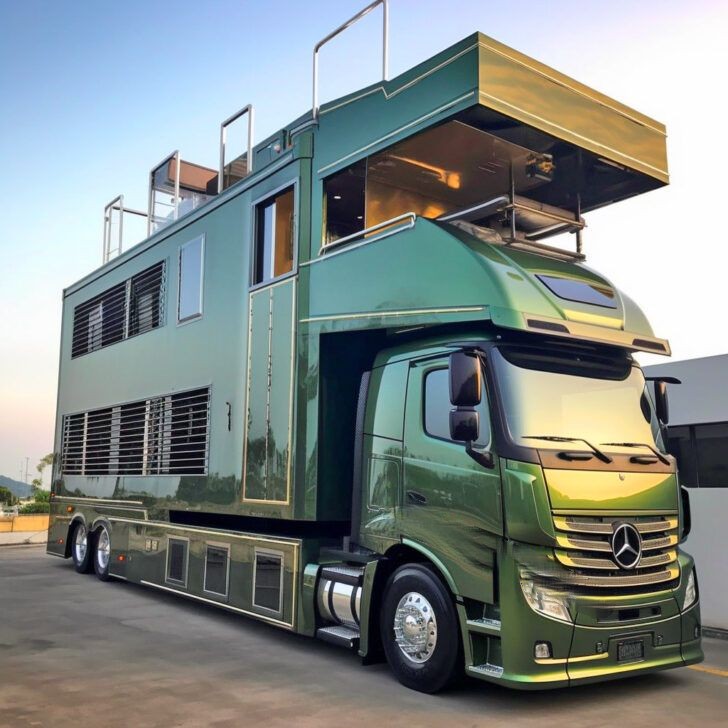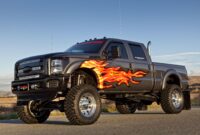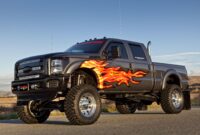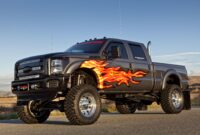Converting Semi Trucks To RV: Your Ultimate Guide to Mobile Grandeur cars.truckstrend.com
The open road calls, but for some, the confines of a traditional RV simply don’t suffice. Imagine a living space on wheels that offers unparalleled room, robust durability, and the unmistakable presence of a true road warrior. This vision is rapidly becoming a reality for a growing community of adventurers and digital nomads who are embracing the ultimate customization project: converting a semi-truck into a luxurious, self-contained Recreational Vehicle.
Converting a semi-truck into an RV is more than just a home improvement project; it’s a bold statement of independence, a commitment to a unique lifestyle, and an engineering marvel. Far from being a mere sleeper cab, these conversions transform the powerful chassis of a commercial hauler into a bespoke mobile residence, complete with all the comforts of home, often with the added benefit of immense towing capacity and the ability to go truly off-grid. This comprehensive guide will delve into every facet of this fascinating undertaking, from the initial spark of an idea to the practicalities of life on the open road.
Converting Semi Trucks To RV: Your Ultimate Guide to Mobile Grandeur
Why Convert a Semi-Truck into an RV? The Allure of Grand Scale Living
The appeal of a semi-truck RV conversion stems from a unique blend of practical advantages and aspirational desires:
- Unmatched Space and Customization: This is arguably the primary draw. Unlike conventional RVs built on light or medium-duty chassis, a semi-truck provides a massive platform. This translates to more interior living space, higher ceilings, full-sized appliances, dedicated sleeping areas, spacious bathrooms, and even workshops or garages for toys like ATVs or motorcycles. The blank canvas allows for virtually limitless design possibilities, tailored precisely to your needs and preferences.
- Durability and Longevity: Semi-trucks are engineered to haul immense loads over millions of miles. Their heavy-duty components, robust frames, and powerful engines are built for endurance. A well-maintained semi-truck chassis can offer decades of reliable service as an RV, often outliving several traditional RVs.
- Superior Power and Towing Capacity: If your adventures involve bringing along a car, a boat, a horse trailer, or heavy equipment, a semi-truck RV offers unparalleled towing capabilities. Its powerful engine and robust drivetrain make light work of challenging terrains and steep inclines, providing confidence and stability that smaller RVs simply cannot match.
- Unique Aesthetics and Road Presence: There’s no denying the commanding presence of a semi-truck RV. These rigs turn heads and spark conversations everywhere they go. For those who appreciate standing out and embracing a distinctive mobile lifestyle, a semi-truck conversion offers an aesthetic that is both rugged and refined.
- Potential for Cost-Effectiveness (Long Term): While the initial outlay can be significant, especially for professional builds, a DIY semi-truck RV can potentially offer more living space and durability for the money compared to a high-end luxury RV. Furthermore, the longevity of the chassis means fewer major replacements over time.
- Enhanced Off-Grid Capability: The ample space on a semi-truck allows for larger fresh, grey, and black water tanks, extensive battery banks, and substantial solar panel arrays. This capacity significantly extends the time you can spend off the grid, enjoying remote locations without needing external hookups.
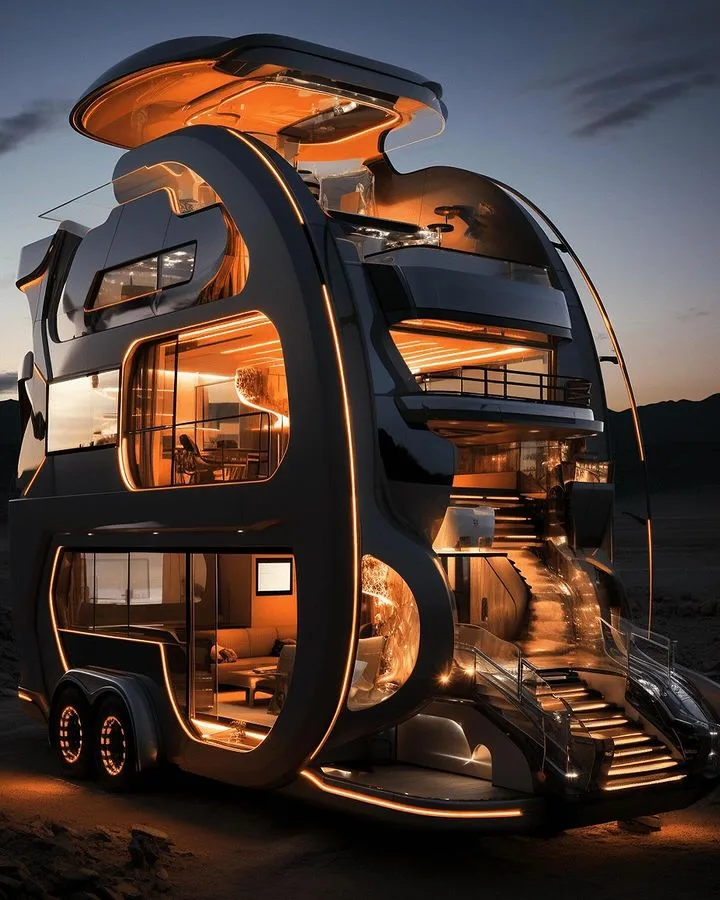
Choosing the Right Semi-Truck for Conversion
The foundation of your dream RV begins with selecting the right truck. This crucial decision impacts every aspect of the conversion:
- Cab-Over vs. Conventional:
- Cab-Over (COE): The engine is beneath the cab. Pros: Shorter overall length for a given living space, better maneuverability in tight spots. Cons: Engine access can be challenging, less common in the used market in North America.
- Conventional: The engine is in front of the cab (the classic long-nose look). Pros: Easier engine access, often more available used trucks, iconic aesthetic. Cons: Longer overall length, potentially less maneuverable. Most conversions use conventional trucks.
- Engine and Transmission: Research the reliability, fuel efficiency, and maintenance costs of different engine models (e.g., Cummins, Detroit Diesel, Caterpillar). Manual transmissions offer more control and potentially better fuel economy, but automatics provide easier driving.
- Frame Length: This is critical. A longer frame allows for a larger living box. Measure the available frame rail length behind the cab to determine how much living space you can realistically build.
- Maintenance History and Condition: A comprehensive pre-purchase inspection by a reputable heavy-duty mechanic is non-negotiable. Look for trucks with good service records, minimal rust on the frame, and a solid drivetrain. Buying a cheap truck with hidden mechanical issues will quickly erode any potential savings.
- Budget for the Truck Itself: Used semi-trucks vary wildly in price based on age, mileage, condition, and manufacturer. Expect to pay anywhere from $15,000 for an older, high-mileage truck to $50,000+ for a newer, well-maintained one.


The Conversion Process: A Step-by-Step Blueprint
Converting a semi-truck is a multi-phase project demanding diverse skills and meticulous planning.
Phase 1: Planning and Design
This is where your vision takes shape. Sketch out floor plans, considering essential areas like kitchen, bathroom, sleeping, and living spaces. Factor in storage, window placement, and utility routing. Create a detailed budget, accounting for every material, tool, and potential professional service. Research state-specific legal requirements for vehicle reclassification and weight limits.
Phase 2: Preparing the Truck
Thoroughly clean the chassis, remove any unnecessary components (like the fifth wheel or old sleeper if building a new box), and address any rust. Inspect the frame for cracks or damage. If your design requires a longer or shorter frame, this is the stage for professional frame modifications, which must be done by certified welders to maintain structural integrity.
Phase 3: Building the Shell/Box
This is the "house" part of your RV. Common materials include steel or aluminum tubing for the frame, with exterior skins of aluminum, fiberglass reinforced panels (FRP), or even composite panels for lighter weight and better insulation. Ensure robust structural integrity. Cut openings for windows, doors, and utility access points.
Phase 4: Interior Framing and Utilities
Once the shell is complete, begin framing the interior walls, cabinets, and other structures. This is also the critical phase for installing your utility infrastructure:
- Plumbing: Install fresh, grey, and black water tanks, a water pump, an on-demand water heater, and all supply and drain lines for the kitchen and bathroom.
- Electrical: Design a robust 12V DC system (for lights, fans, pumps) and a 120V AC system (for appliances, outlets). This includes a large battery bank (lithium-ion recommended), an inverter/charger, shore power inlet, and potentially a substantial solar panel array and charge controller. Safety is paramount; consider professional electrical consultation.
- HVAC: Plan for heating (diesel heater, propane furnace) and cooling (rooftop AC units, mini-splits). Proper ventilation is also key.
Phase 5: Interior Finishing and Appliances
Bring your living space to life. Install insulation (spray foam, rigid foam, or rock wool are popular choices) for thermal and acoustic comfort. Cover walls and ceilings with chosen materials (plywood, tongue and groove, composites). Lay flooring. Install cabinetry, countertops, and all appliances (refrigerator, stove/oven, microwave, washing machine). Fit bathroom fixtures like a toilet, shower, and sink. Finally, furnish the space with beds, seating, and storage solutions.
Phase 6: Exterior Finishing and Detailing
Complete the exterior with paint, custom graphics, exterior lighting, and any additional storage compartments or awnings. Consider roof access ladders or decks. Ensure all exterior seams are properly sealed to prevent water intrusion.
Important Considerations and Challenges
Embarking on a semi-truck RV conversion is not without its hurdles:
- Budget Overruns: The costs can quickly escalate. Always add a 20-30% contingency to your budget for unexpected expenses. Materials, specialized tools, and professional labor for complex systems (like frame modification or advanced electrical) can be significant.
- Time Commitment: This is a marathon, not a sprint. A comprehensive DIY conversion can take anywhere from several months to multiple years, depending on your skills, available time, and the complexity of the build.
- Technical Skills Required: You’ll need a diverse skill set, including welding, carpentry, electrical wiring, plumbing, and automotive mechanics. Be realistic about your abilities and be prepared to learn or hire professionals for tasks beyond your expertise.
- Legal and Regulatory Issues: This is perhaps the most complex aspect.
- Vehicle Classification: You’ll need to re-register the truck as an RV/Motorhome with your state DMV. This often involves specific requirements regarding sleeping, cooking, and bathroom facilities.
- Weight Restrictions and CDL: While most semi-truck RVs, once converted, will not require a Commercial Driver’s License (CDL) if used for personal recreational purposes and not for hire, specific state laws and Gross Vehicle Weight Rating (GVWR) limits can vary. Always verify local regulations.
- Insurance: Finding an insurance provider willing to cover a custom-built RV can be challenging. You’ll likely need specialized RV insurance, and an appraisal of your build’s value might be required.
- Inspections: Some states require inspections to verify the conversion meets RV standards before reclassification.
- Driving and Maneuverability: These rigs are massive. Parking can be a significant challenge, especially in urban areas or smaller campgrounds. Fuel consumption will be high (typically 6-10 MPG).
- Maintenance: Semi-truck components are expensive, and specialized mechanics might be required for major repairs. Factor this into your long-term cost of ownership.
Tips for a Successful Semi-Truck RV Conversion
- Plan Meticulously: A detailed plan, including blueprints and a comprehensive budget, is your most valuable tool.
- Prioritize Safety: Electrical, plumbing, and gas systems must be installed correctly and safely. If in doubt, hire a professional. Structural integrity of the living box is also paramount.
- Network and Learn: Join online forums, Facebook groups, and communities dedicated to semi-truck conversions. Learn from others’ experiences, successes, and mistakes.
- Don’t Be Afraid to Outsource: For tasks like frame modification, complex electrical system design, or specific welding, hiring a qualified professional can save time, ensure safety, and prevent costly errors.
- Build for Your Lifestyle: Design the space around how you genuinely intend to use it. If you cook a lot, prioritize kitchen space. If you work remotely, ensure a dedicated office area.
- Document Everything: Take photos of every step of the build. Keep all receipts for materials and services. This documentation is invaluable for insurance, future maintenance, and potential resale.
Estimated Price Table for Converting Semi Trucks To RV (DIY Focus)
Please note: These are highly variable estimates. Costs depend on the truck’s condition, material choices (budget vs. luxury), DIY vs. professional labor, and your geographic location.
| Category | Estimated Cost Range (USD) | Notes |
|---|---|---|
| Used Semi-Truck (Chassis) | $15,000 – $50,000 | Varies by age, mileage, condition, manufacturer. Pre-purchase inspection recommended. |
| Shell/Box Materials | $5,000 – $20,000 | Steel/aluminum framing, exterior panels (FRP, aluminum, composite). Larger size = higher cost. |
| Insulation | $1,000 – $3,000 | Spray foam, rigid foam, rock wool. Crucial for comfort and energy efficiency. |
| Windows & Doors | $2,000 – $8,000 | RV-specific windows, entry door, emergency exits. |
| Plumbing System | $2,000 – $7,000 | Fresh/grey/black tanks, water pump, water heater, PEX tubing, fixtures (sink, toilet, shower). |
| Electrical System | $3,000 – $15,000+ | Batteries (AGM/Lithium), inverter/charger, solar panels, charge controller, wiring, fuse panel, outlets, lights. Can get expensive. |
| HVAC (Heating & Cooling) | $1,500 – $5,000 | Diesel heater, propane furnace, rooftop AC units or mini-split. |
| Interior Finishing | $5,000 – $25,000 | Flooring, wall/ceiling coverings, cabinetry materials, countertops, paint, trim. Highly customizable. |
| Appliances | $2,000 – $10,000 | Refrigerator, stove/oven, microwave, RV toilet, possibly washer/dryer combo. |
| Miscellaneous | $5,000 – $15,000+ | Tools, fasteners, sealants, adhesives, paint, permits, registration, title transfer, contingency fund (crucial!). |
| Optional: Professional Labor | $30,000 – $100,000+ | For specific complex tasks (frame, major electrical/plumbing) or a full professional build. Not included in total DIY estimate. |
| Total Estimated DIY Range | $41,500 – $158,000+ | This range represents a wide spectrum from basic to high-end DIY builds, excluding professional labor costs. |
Frequently Asked Questions (FAQ) about Semi-Truck RV Conversions
Q1: Is converting a semi-truck cheaper than buying a traditional RV?
A1: It depends heavily on the level of DIY vs. professional help and the quality of materials and finishes. A budget-conscious DIY conversion can be cheaper than a comparable high-end luxury RV, offering more space and durability. However, a professionally built semi-truck RV can easily exceed the cost of most production RVs.
Q2: Do I need a CDL (Commercial Driver’s License) to drive a semi-truck RV?
A2: In most US states, no, if the vehicle is re-registered as a personal RV/motorhome and is not being used for commercial purposes or for hire. However, specific state laws vary regarding Gross Vehicle Weight Rating (GVWR) limits that might still trigger CDL requirements. Always check your state’s DMV regulations. You will, however, be driving a very large vehicle and should be comfortable with its size and weight.
Q3: How long does a semi-truck RV conversion take?
A3: For a dedicated DIY builder, it typically takes anywhere from 6 months to 2 years, or even longer, depending on the complexity of the design, the builder’s skills, and the time available for the project. Professional conversions can be completed faster but at a much higher cost.
Q4: How do I insure a custom-built semi-truck RV?
A4: You’ll likely need specialized RV insurance from a provider that handles custom builds. They may require photos of the build process, a detailed list of materials and components, and potentially an appraisal to determine the vehicle’s value. Standard auto insurance will not suffice.
Q5: Where can I park a semi-truck RV?
A5: Parking can be a significant challenge due to their size. Many standard RV parks have length limits (often 30-40 feet). You’ll need to research "big rig friendly" RV parks, truck stops, or seek out boondocking locations. Maneuvering in urban areas or tight spaces will require considerable skill and planning.
Q6: What kind of fuel economy can I expect from a semi-truck RV?
A6: Don’t expect great mileage. Most semi-truck RV conversions get between 6 to 10 miles per gallon (MPG), depending on the engine, load, terrain, and driving style. Fuel costs will be a significant ongoing expense.
Conclusion: The Road Less Traveled, Redefined
Converting a semi-truck into an RV is an ambitious undertaking, a testament to ingenuity, and a passport to unparalleled freedom on the road. It demands meticulous planning, a significant investment of time and resources, and a willingness to learn a diverse array of skills. The challenges are real, from navigating complex legalities to mastering the art of driving a behemoth.
Yet, for those who embrace the journey, the reward is immense: a truly unique, robust, and highly customized mobile home that stands apart from the crowd. It’s a statement of self-reliance, an embodiment of the adventurous spirit, and a comfortable sanctuary that can take you to the farthest reaches of your wanderlust. A semi-truck RV isn’t just a vehicle; it’s a home built on a foundation of power and possibility, ready to conquer any highway that calls.

